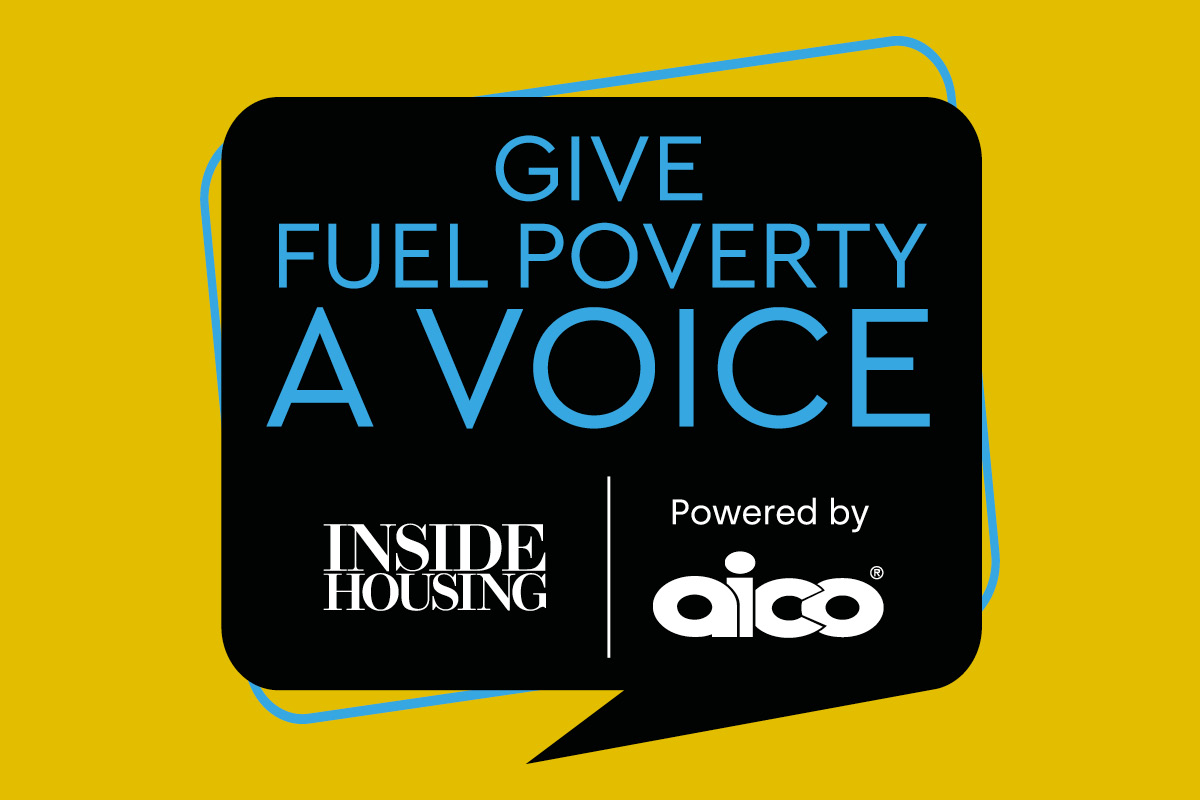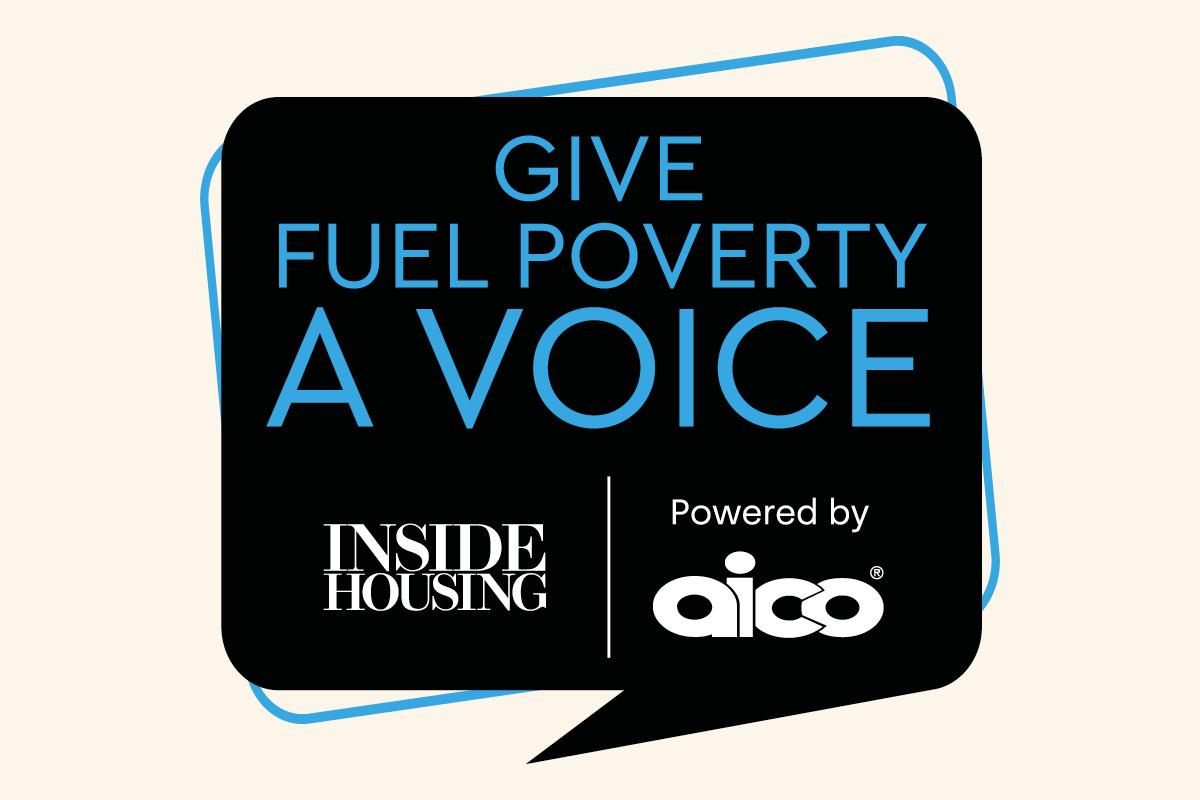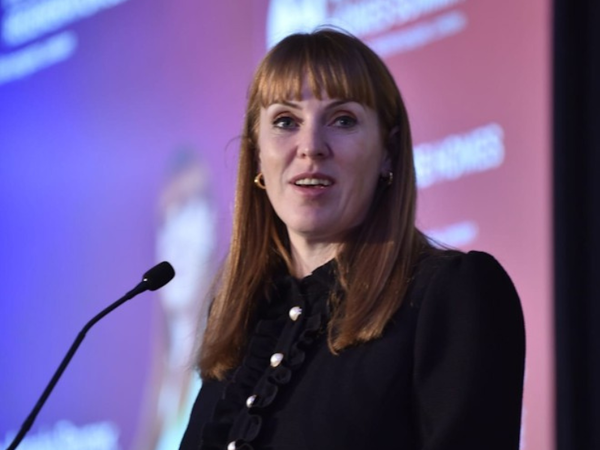Survey report: how landlords are tackling fuel poverty
Social housing residents have been hit by the cost of living crisis. Inside Housing has launched a new campaign, Give Fuel Poverty a Voice, sponsored by Aico, to look at how landlords are tackling the issues
In association with:

Every year, there are more than 10,000 excess winter deaths because people cannot afford to heat their homes, according to the End Fuel Poverty Coalition.
The organisation estimates that one in five of all households in England are pushed into poverty because of the costs of meeting their basic needs to keep warm.
The effects of fuel poverty are felt no more acutely than by social housing tenants, as a recent survey by Inside Housing, in partnership with Aico, laid bare.
The government defines people living in fuel poverty as those who have an income below the poverty line (any family earning less than 60% of the national median annual pay for full-time work, which in 2021 was £31,285, according to the Office for National Statistics), at the same time as living in a home with an Energy Performance Certificate (EPC) rating below Band C.
Of the 117 businesses that were polled across the sector, a significant 23% said 81% or above of their tenants were living in a low-income household. A further 33% said 61-80% and 22% said 31-60%.
A third of those organisations said between 31% and 60% of their properties had an EPC rating below Band C, while 14% said more than 60% of their properties were below Band C. A further 6% said more than 60% of their properties were below Band E, while 74% said under 10% of their stock fell within this category. Just over 70% of respondents said they had a strategy in place to bring their stock up to a Band C or above by 2030.
Chris Jones, chief executive at HomeLINK, whose property monitoring software organisation was acquired by Aico, adds: “Even if organisations meet the 2030 target, there are still eight winters where things are probably going to get worse, so the sooner things get done, the better, including identifying those homes that are inefficient or where you’ve got vulnerable people.”
With that in mind, 30% of respondents said they would hit the target by 2027, 14% said by 2024 and 4% said they would complete in 2022, including Housing 21, whose chief executive, Bruce Moore, says: “Six years ago, we recognised that fuel poverty was an issue and have been addressing this to get all of our properties to EPC Band C.”
With such a large proportion of tenants vulnerable to fuel poverty, the survey sought to find out what steps landlords are taking to identify and support vulnerable residents, as well as what long-term plans they have in place, or were implementing to end fuel poverty.
The majority (71%) said they did not track how many of their tenants were living in fuel poverty.
On this, one respondent said: “I don’t think we hold enough data about our residents to be able to track that sufficiently because you need to know all their income and other sources. That’s the bit we struggle with.”
For the remaining 29% who did track their tenants, 16% said more than half were currently living in fuel poverty, while 19% of respondents said 30-39% were. Nearly 80% said they anticipate this to rise in the next 18 months, with a significant number of respondents citing fuel price rises and the cost of living crisis as the reason for this.
Putting those struggles into context, one respondent said their residents were “anxious and depressed, [they] don’t know how to cope or what to do, relying on food banks to provide food so they can spend on fuel”.
‘Scared’ and ‘frightened’
Another respondent quoted one of their residents, who emailed the organisation, saying: “I am dreading the energy bills and I am so, so scared [and] frightened as I don’t know how we are going to manage! I know the rent has gone up by £4.24 a week, council tax £2.50. I have applied for [the] essentials tariff on water, which we are accepted for. Already claim warm home discount. I am so, so afraid, don’t know what we are going to do and how we are going to manage.”
Some said residents were “self-disconnecting”, which is when a resident cuts off their gas or electric supply because of a lack of credit on their meter or account.
Linda Tookey, money advice and benefits manager at Vivid, says she anticipates this issue to get worse: “The bills are going to keep going up and I’m concerned that we’re going to see more self-disconnection from gas if they’re using gas central heating because you can turn everything off, but you’ve still got the standing charge.”
This has several knock-on effects, explains Ms Tookey. Cold environments, aside from being detrimental to a resident’s health due to a lack of heat, can also cause damp and mould to spread, which can reduce air quality.
In numbers
23%
Respondents who said 81% or more of their tenants are living below the low-income threshold
10k
Excess winter deaths because people cannot afford to heat their home
70%
Respondents who have a strategy in place to bring stock up to Band C by 2030
71%
Respondents who do not track how many residents are in fuel poverty
“We’ll also have the problem of trying to get the gas boiler serviced, which is a legal requirement for us to do on an annual basis. So that’s a big problem where we would have to try and get the gas reconnected.”
Mr Moore, whose organisation provides extra-care and retirement properties for older people, explains how the group procures utility costs to heat the communal areas in several of its retirement courts: “At the moment, we have done that on a fixed-price contract, which is good value as it’s below the price cap, but when that comes up for renewal in September, we won’t get the benefit of the price cap because we’re purchasing it as an organisation rather than a consumer, so that’s a real concern. Either we get that price cap to apply to us as well or we have to think about how we cover that so residents aren’t disadvantaged.”
Asked whether that meant Housing 21 would absorb any costs rather than passing them on to residents, Mr Moore says: “That’s something we’re definitely recognising we will have to consider.”
Looking at how providers engage with residents on fuel poverty, the results were evenly split between phone, email, text, letter and face-to-face. Respondents also cited the importance of using multiple methods, including social media and newsletters.
Ms Tookey says Vivid would be trialling different types of engagement among residents living in its EPC Bands F and G homes that will be getting retrofits this year, to see what techniques are most effective. Around 0.1% of its 32,000 homes sit within this category.
She says: “We won’t only be engaging with residents during the works [because] there’s going to be [educational work to do after] that explains how residents will need to live in their homes slightly differently to enable them to benefit from [the upgrades] from a financial point of view.”
Support for residents varied across organisations and included offering fuel vouchers, and money/energy advice. Initiatives included “an energy buddies service”, according to one respondent, who said it offered bespoke energy advice to tenants, and also fitted free micro adaptations such as foil radiator panels.
Nearly 70% of respondents said they intended to increase support now the energy price cap has been lifted. One organisation said it had invested an extra £1.5m in crisis support, while another said it had increased its crisis fund from £10,000 to £50,000.














